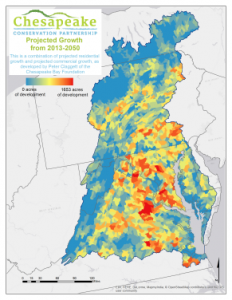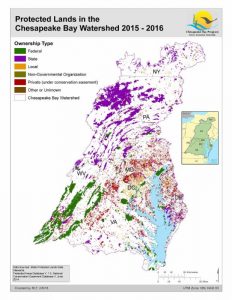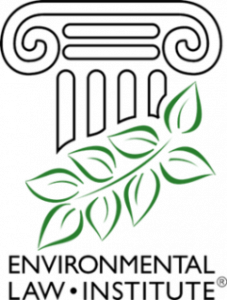As we start a new year, it’s worth taking a few minutes to reflect on the partnership’s accomplishments during 2017 and look ahead to 2018. Here is a quick overview!
New maps of Chesapeake conservation goals:
In March, we published new maps setting out the partnership’s long-term conservation goals for the watershed. Displayed in LandScope Chesapeake, the maps depict important farms, forests, habitat, heritage and health.
New analyses of influences on Chesapeake conservation:
At the partnership’s annual meeting in November, participants viewed new analyses and maps of factors that influence land conservation. These include: Energy Infrastructure, Development, Inundation, Farmland Preservation Capacity, Land Trust Capacity, and current Conservation Focal Areas. We also shared a new map of the “most valued“ and other “valued lands“ in the watershed based on a composite of the partnership’s long-term conservation goals. In early 2018 the Conservation Goals Mapping and LandScope Team will be making revisions to these maps before reviewing them with the Steering Committee and publishing them to LandScope. We will also be reaching out to partnership members to discuss all of these mapping products, how they can best be applied, and what additional mapping and analysis is needed.
Halfway to achieving the 2 million acre goal:
Last January, the partnership and the Chesapeake Bay Program updated the latest statistics and map on the status of land protection in the Chesapeake watershed. Tracking carried out since 2010 shows that as of January 2017 a watershed-wide total of over 8.8 million acres are currently protected, representing 22% of the land area in the watershed. This marks an achievement of 50 percent of the goal to protect an additional two million acres of land throughout the watershed by 2025. In 2018, staff and partnership members will remain diligent in advocating for continued funding of conservation in state and federal budgets.
Framing a BHAG:
At the 2016 annual meeting, participants called for formulating a visionary conservation goal or “big, hairy, audacious goal” (BHAG) to drive conservation and restoration in the decades beyond 2025. The partnership’s Steering Committee began framing such a goal in 2017 and shared it at the November annual meeting: Half makes us whole. Keep half for farming, forests, habitat, heritage and health to sustain and nurture us. Those in attendance were supportive of this concept and of moving forward with a communication and messaging strategy for various stakeholders — see more on this below.
Developing a communications and messaging strategy:
The partnership has had a goal of developing a communications and messaging strategy for several years. We retained Spitfire Strategies to conduct a presentation and discussion at November’s annual meeting focused on strategy development supporting roll-out of the partnership’s BHAG and long-term conservation goals. Participants were excited about moving these types of work products forward. In 2018, staff will work with Spitfire and the Steering Committee to develop a proposal and pursue options for funding its development and implementation.
Progress toward crediting conservation in the TMDL:
Conservationists have long called for providing “credit” for land protection in the Chesapeake Bay TMDL (Total Maximum Daily Load). To do so would create financial incentives for conservation going forward including the use of private capital markets to conserve and restore high valued lands. In December, the Chesapeake Bay Program’s Principals’ Staff Committee approved use of the Chesapeake Bay Land Change Model to simulate 2025 land use conditions as the basis for jurisdictional Watershed Implementation Plans. This may be the first time in the nation that land use planning and land conservation will be formally recognized as Best Management Practices (BMPs) in a TMDL. This sets a critical foundation for moving forward to develop the standards and criteria under which future land conservation will receive TMDL credit. In 2018, partnership staff and members will become more actively involved in the work of the Land Use Work Group of the Chesapeake Bay Program’s Water Quality Goal Implementation Team to assist in developing the standards, criteria and BMPs to credit land conservation under the Bay TMDL.
Initiating a review of mitigation policies:
With concerns growing over real and potential impacts of energy infrastructure on conservation lands and values, the partnership initiated a review of opportunities for enhancing state level mitigation policies in the states of Maryland, Pennsylvania, and Virginia. The review is being done by the Environmental Law Institute with a work group of state agencies and land trust representatives. A preliminary report was provided at the 2017 annual meeting; the final report is expected by the summer of 2018. In 2018, staff with continue to work with ELI and the work group to secure additional funding to complete the project and carry out the balance of the tasks and review recommendations with the Steering Committee.
This represents just a fraction of the accomplishments of the partnership in 2017. There are hundreds of on-the-ground conservation successes achieved by the partnership’s many member organizations.


